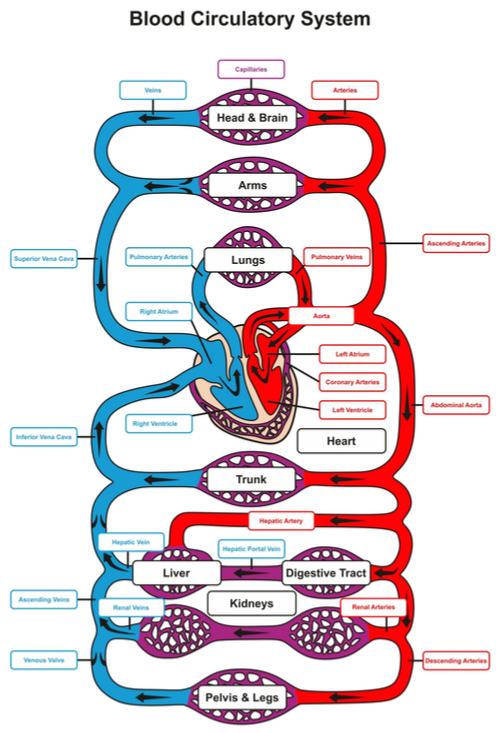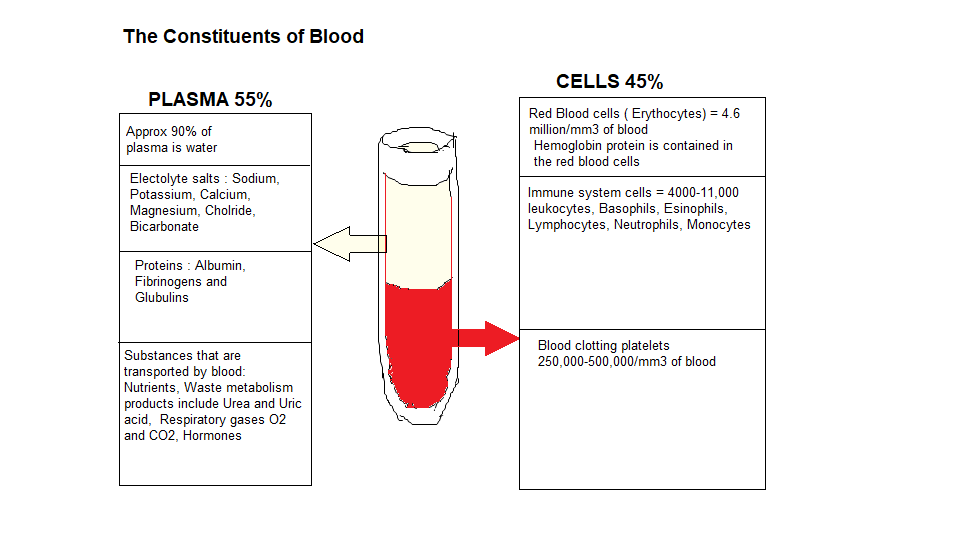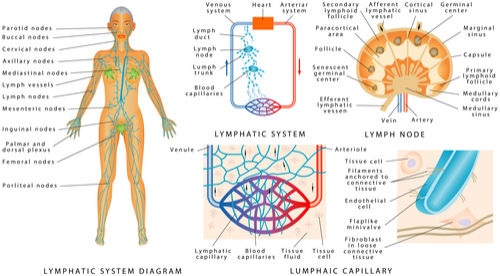Introduction
I know what you are going to say, Water...really, how interesting can that be ?, maybe I will skip this…but wait…Water is a nutrient, in fact it is as essential, maybe more so, than the other 90 essential nutrients. Ask yourself, what puts the fire out when we are hot ?, you say perspiration, but what is perspiration ?..body water and primary electrolytes such as sodium and chloride with possibly potassium,urea, lactate, amino acids, bicarbonate and calcium. How does the body scrub the intracellular space of debris and waste ?..Water, so you see water is a vital nutrient. Let us explore a little further…stick with it you might find it interesting..if not take a shower…that’s Water as well…lol.
Water in the body

I am sure you all know that around 60-70% of the body is water (between 50-55% for females since they have less muscle mass and more body fat), and approximately the same % applies to the planet in comparison to dry land space. The newborn is almost 95% water. Most of the fluid is intracellular fluid ( inside the cell) and about ⅓ is in the spaces outside the cell (extracellular fluid). Although water makes up about ⅔ of the body, the water molecule is so small it translates into 99% of all molecules in the body. The 100 trillion or so cell’s ( 25 trillion red blood cells, 75 trillion of other cell types make up the rest of the body, organs and adipose tissue etc) contents that make up the adult human body,are basically lyophilic gels, taking in and releasing water as part of the biophysics of metabolism. Water has this unique property which is its high specific heat, making water ideal to disperse heat, generated from metabolic chemical reactions. Without rapid heat dissipation afforded by water, body exercise would soon coagulate cellular proteins in the muscles. The solvent properties of water is ideal for scrubbing cells, allowing the movement of nutrients into the cells and the removal of metabolic end products exiting the cells.
Cellular fluid activity
The intracellular fluid (inside) contains a high density of Potassium, Magnesium and Phosphate ions, while the extracellular fluid (outside) contains a high density of Sodium, Chloride and Bicarbonate ions and cell nutrients that include Oxygen, Glucose, Fatty acids, Amino acids and Carbon dioxide. This is the fluidic constituents of the cellular environment. Extracellular fluid is transported throughout the entire body in the bloodstream in 2 steps, 1.The movement of blood in the blood vessels, 2. Fluid between the blood capillaries and into the intercellular space. As the blood circulates within the blood capillaries, there is a continual exchange of extracellular fluid between the blood plasma, and the interstitial fluid, that fills the intercellular space. Interstitial fluid is located outside of the blood vessels and intravascular is fluid inside the blood vessels. However, the capillary walls are permeable, so the contents of the interstitial fluid and the intravascular fluid move in/out of the blood vessel by diffusion. The extracellular fluid throughout the body, continually mixes with both the intravascular and interstitial fluids. Interstitial fluid is made up of water solvent, sugars, salts, fatty acids, amino acids, coenzymes, hormones, neurotransmitters, white blood cells (immune system cells) and cell waste products; quite a biological soup. Although its contents are variable depending upon the cell exchanges and biological tissue. The diagram below shows the body fluid volumes :
 Blood circulatory system
Blood circulatory system
To understand the ‘ biological plumbing system’ of the body, let us first look at the blood circulatory system that is depicted in the diagram below, before we explain the interrelationship between plasma, interstitial fluid and the lymphatic system which are all part of the internal plumbing. All the blood in circulation traverses the entire circulatory circuit on average once /minute at rest, and as many as 6 times/minute during exercise. When the blood flow reaches the capillaries, a continual exchange of extracellular fluid and the plasma part of the blood, in the gastrointestinal tract, takes place, where the extracellular fluid picks up the absorbed nutrients. The blood capillaries interact with lymphatic capillaries as we will discuss in the next section.

Wait a minute, we are talking about blood, but our discussion is on water, but blood contains water. Blood is not just a red liquid that spills out of a wound, it contains various other substances. If you were to centrifuge a sample of blood it will separate into 2 parts, at the top of a test tube would be the plasma which is a yellow liquid and at the bottom would be a red liquid containing living cells. The following diagram describes the various contents.

Lymphatic/Blood capillaries interaction

As mentioned before, blood circulates throughout the body and nutrient, waste and gas exchange occurs between the blood and the interstitial fluid. Hydrostatic and osmotic pressure of the blood capillaries force fluid out of the blood from the arterial ends, shown in red/blue in the diagram above, as they join the lymphatic capillaries, which then reabsorb the fluid at the venous end, just before entering the heart shown in the top middle diagram. However, around 3 litres of fluid is left behind in the tissue spaces, which becomes part of the interstitial fluid ( fluid outside of the cells ), which must be ‘vacuumed up’ by the lymphatic vessels, that are part of the lymphatic capillary system, where the fluid is termed ‘Lymph’ ( clear water ) and fed back into the bloodstream within the lymphatic one way system toward the heart. The lymphatic capillaries and the endothelial cells that form the capillary walls, resemble ‘flaplike’ minivalves ( revolving doors ), shown in the diagram, right hand bottom picture. When the the fluid pressure is higher in the interstitial fluid, these valves open, allowing fluid to drain into the lymphatic capillaries, but if the pressure is higher in the lymphatic vessels, these valves flap shut, preventing lymph from leaking back out. As part of this fluid flow, cell debris, bacteria and viruses enter the lymphatic system as they are designed to do, to be dealt with by the army of immune cells, resident within the lymph system namely the lymph node filtering mechanism ( some of the hundreds of lymph nodes are shown in the above diagram ‘lymphatic system diagram’). The lymph system is our own personal drainage system.
Cellular water
We all know that water is defined by a chemical formula H20, but due to the research performed by a leading expert and author Dr Gerald Pollack, he found the water in cells actually has a chemical formula of H302. Dr Pollack explains that the chemical structure of the water molecules that bathe the inner surfaces of the cell, and its role as a ‘scrubber’ to get rid of waste, transform the original H2O structure into H302 which he terms as ‘easy water’. So the water molecules that are around the hydrophilic cell surfaces is negatively charged, while water molecules away from the cell surfaces are positively charged, essentially creating a battery, thus creating energised water molecules that can be harnessed. This energy is created by photovoltaic effects from the light absorbed by the body, including infrared light, which is heat, and as Dr Pollack goes on to say, this is the 4th phase of water, beyond what is commonly known as the 3 phases of water ‘Vapour, Solid and liquid’.
When the host becomes sick, the cells in question, work inefficiently and the ‘easy water’ needs replenishment. This can be achieved by sauna treatment or ‘grounding’, which requires walking bare feet on the ground, say on grass or sand on the beach. Since earth’s ground is negatively charged, and the human body is negatively charged, this will replenish the negative charge of the intracellular water, in essence rebuilding the intracellular water. Alternatively, drinking spring water, that naturally comes from a deep water spring, or any water source that is deep, and under pressure becomes ‘easy water’. The same is true from water that is run off from a glacier, since the transformation of ice to water, converts the water to easy water. We humans are as negatively charged like the planet we inhabit and our waste products like sweat, urine and feces are positively charged, which is why the body needs to expel to maintain its negativity.
The dangers of municipal water

Water is incredibly important for our entire body, and the correct water for our body is not municipal water from the faucet. Before you fill up a glass of water from the faucet, just remember you are drinking contaminated water, not by government standards because they believe that adding chlorine and/or fluoride etc to ‘clean’ the water is harmless. Typically municipal water contains:
- Liquified chlorine
- Fluorosilicic acid
- Aluminium sulphate
- Calcium hydroxide
- Sodium silicofluoride
So municipal water contains:
- Chlorine
- Fluorine compounds
- Trihalomethanes (THMs)
- Salts of:
- arsenic
- radium
- aluminium
- copper
- lead
- mercury
- cadmium
- barium
- Hormones
- Nitrates
- Pesticides
Trihalomethanes (THMs) are microbial disinfectants that contain chemicals, chloroform, bromodichloromethane, dibromochloromethane, and bromoform. Pesticides are endocrine disruptors and highly estrogenic, along with birth control residue that ends up the water supply from urine….hormones…really. Pharmaceuticals have also been found in drinking water that include ACE inhibitors (heart drug), antibiotics, antidepressants, beta-blockers, blood thinners, calcium-channel blockers (heart drug), carbamazepine (anti-seizure drug), digoxin, fibrates (cholesterol drugs), naproxen (an anti-inflammatory), painkillers like paracetamol and codeine, and tranquilisers. Sodium Nitrite is a preservative used in processed and cured meats that can damage cells, and the nitrites in drinking water come from fertilizers ( from run-off water ), sewage and mineral deposits. Although, Sodium Nitrite is introduced into municipal water to inhibit bacterial growth, an excess can actually promote pathogenic bacterial growth, such as Cyanobacteria. I might add, the large industrial farm complexes produce mountains of animal waste that end up the groundwater supply that nobody seems to monitor. Back in 2006, Lead levels ( probably residue from old water pipes) in the municipal drinking water in several public schools in Toronto was so high, its consummation was banned to students.
Molecular Resonance Effect Technology(MRET)

We cannot discuss water without discussing MRET. Masaru Emoto in his book ‘The hidden messages in water’ explained that water structure can be changed by geomagnetic fields since water is constantly in transition. Dr Igor Smirnov was part of the investigative team assigned to the aftermath of the 1986 Chernobyl nuclear power plant meltdown and he discovered that some affected people from the disaster that were rehabilitated to the Caucasus Mountains, drank the spring water that helped counteract the development of oncology disease. After a number of years (15) of research, Smirnov developed MRET at the University of St Petersburg. In essence MRET changes the molecular composition of water, using electromagnetic fields and an oscillating optical light with a wavelength of 600-700 nm and a frequency of 7.8 Hertz, so it resembles intracellular water. The low frequency electromagnetic oscillations applied to the water, mimics the natural geomagnetic fields found in places like the Caucasus and Tibetan mountains. This predisposes efficient proton pump ion exchange across the cellular membrane, decreasing physiological viscosity and surface tension, allowing unimpeded transport of nutrients and cellular waste disposal. As Smirnov writes :
“Water profoundly influences all molecular interactions in biological systems. The existence of life depends critically on the capacity of water to dissolve polar molecules that serve as … information carriers.”
For your information MRET machines can be purchased for $350 on Amazon
Scrubbing the drinking water

For as little as $30 or so you can purchase a TDS (Total dissolved Solids) meter which will assess your municipal drinking water and measure a value in Parts/million (ppm). Readings of 500 ppm or above is generally regarded as unfit for human consumption. Most municipal water measure s between 150-420 ppm. A Reverse Osmosis ( RO ) system produces water typically measured at a TDS rate of 90-95% of municipal water which is very low and very drinkable.
Above all, clean uncontaminated water is your lifeline to good health and it is worth the investment to install a water filtration unit such as a Reverse Osmosis (RO) system with a remineralisation end stage since RO systems remove important minerals that you need.
ERIK D. OLSON: Bottled water is used by millions of people around the world, because they think it’s safer than tap water. There is less than one person, according to the Food and Drug Administration, regulating the entire multibillion-dollar bottled water industry in the United States. This means that, that poor person does multiple things, and one of them is water. The Food and Drug Administration, if you ask them what’s in any brand of bottled water, they’ll say, “We have no idea.”
Movie: Flow for the love of water
Check out other Articles in this series:
Nutrients in Food and their bodily purpose I (Phenols)
Nutrients in Food and their bodily purpose II (Lignans, Triterpenes, Phytosterols, Carotenoids & Fats)
Nutrients in Food and their bodily purpose III (Phenolic acids, sulphur, sulphides,sulphoxides )
Nutrients in Food and their bodily purpose IV (Glucosinolates, Sulforaphane, Indole-3-Carbinol)
Nutrients in Food and their bodily purpose V (Lipid distribution, absorbed fats, Criciferous Veg)
Nutrients in Food and their bodily purpose VI (Nutrients required for Liver Detox)
Nutrients in Food and their bodily purpose VII (Seeds & the Omega Fatty Acids)
Nutrients in Food and their bodily purpose VIII (Nutrients required for cellular energy production)
Nutrients in Food and their bodily purpose X (Water II Cellular Hydration)
Nutrients in Food and their bodily purpose XI (Water III Fluid filtration, reabsorption, excretion)
Nutrients in Food and their bodily purpose XII (Water IV Blood pressure, Blood volume regulation)
Nutrients in Food and their bodily purpose XIII (Water V Body Fluid Dysfunction
Nutrients in Food and their bodily purpose XIV (Dental Nutrients)
Nutrients in Food and their bodily purpose XV (Nutrients involved in Methylation I)
Nutrients in Food and their bodily purpose XVI (Nutrients involved in Methylation II)
Nutrients in Food and their bodily purpose XVII (Nutrients involved in Methylation III)
Nutrients in Food and their bodily purpose XVIII (Nutrients involved in Methylation IV)
Nutrients in Food and their bodily purpose XIX (Methylation V and the Microbiota I)
Nutrients in Food and their bodily purpose XX (Methylation VI and the Microbiota II)
Nutrients in Food and their bodily purpose XXI (Superfoods: Wheatgrass)
Nutrients in Food and their bodily purpose XXII (Superfoods: Adaptogens)
Nutrients in Food and their bodily purpose XXIII (A look into our nutritional past Sir Robert McCarrison)
Nutrients in Food and their bodily purpose XXIV (Pregnancy: Nature vs Nurture vs Nutrition)
References/Acknowledgments :
- Essentials of Human Anatomy & Physiology 2000 Elaine Marieb
- Textbook of Medical Physiology 2006 Guyton & Hall
- Dr Mercola interviews Dr Gerald Pollack
- What’s in your drinking water Freshly squeezed water
- Sorry, Did You Just Say There Are Hormones in My Tap Water? 2018 Water for health
- Nitrite in drinking water and its effects H20 Distributors
- Molecular Resonance Effect Technology ( MRET): The dynamic effects on Human Physiology book 2008 Igor Smirnov
Author: Eric Malouin